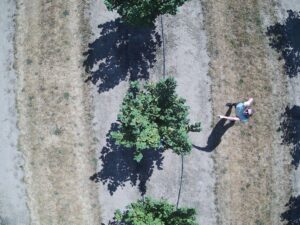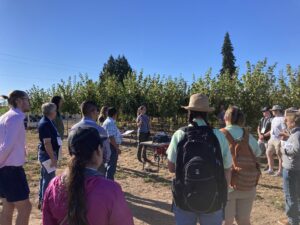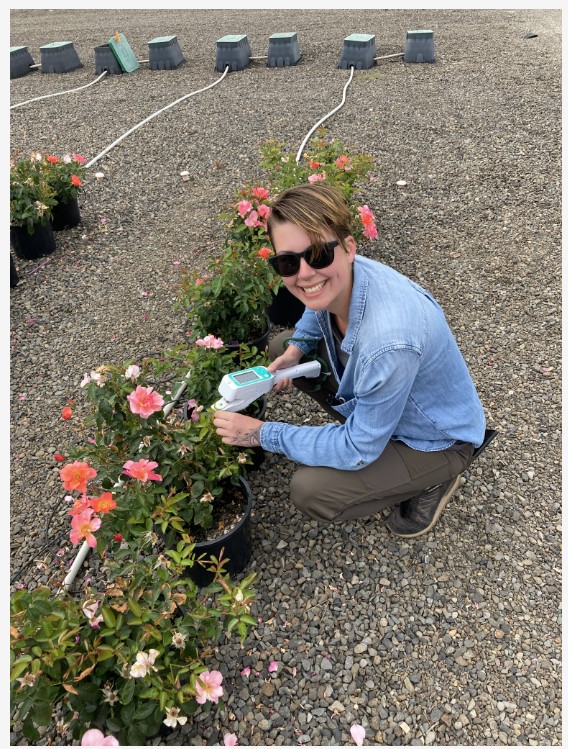At the Western Region International Plant Propagators Society (IPPS), the Pacific Northwest Insect Management Conference (PNWIMC), and the Orchard Pest and Disease Management Conference (OPDMC) last month, we presented cutting-edge research and advancements in our field. Our presentations at the Western Region IPPS and PNWIMC focused on the latest developments in sensor-controlled irrigation, and flatheaded borer management, respectively.

At the Orchard Pest and Disease Management Conference, we discussed the latest techniques in IPM for managing powdery mildew with biological fungicides applied by our laser-guided Intelligent Sprayer system. Through our presentations at these conferences, we aim to advance the knowledge and understanding of plant health in our field and to promote collaboration among professionals. By sharing our research and engaging in discussions with our peers, we strive to advance the science of horticultural production to support the growth and success of the horticulture in the Pacific Northwest region.


At NWREC, we have been working on our new hydroponic greenhouse project. However, since October we have encountered construction challenges in connecting the natural gas heaters, which has impacted the growth of crops such as lettuce, tomatoes, and cucumbers. As a result, lettuce growth has been slow and plagued by Botrytis, and warmer-growing crops like tomatoes and cucumbers have fared even worse. We are working to resolve the permitting issues with the heaters as soon as possible and look forward to updating you on the progress of the greenhouse project in the coming year.




















